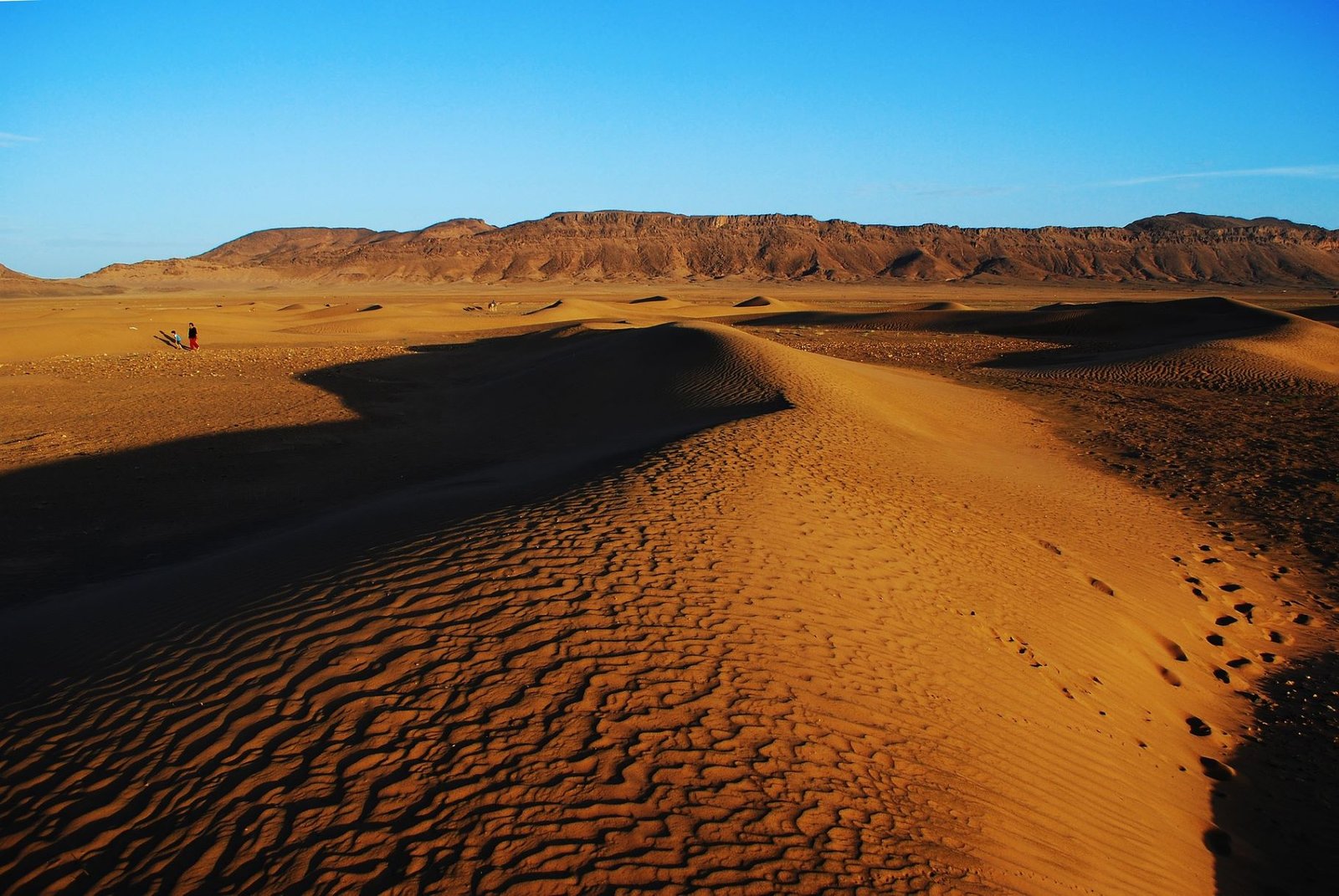Welcome to Morocco, a land of enchanting deserts, vibrant markets, and rich cultural experiences – the perfect destination for an unforgettable honeymoon. Morocco offers stunning landscapes, luxurious accommodations, and a myriad of activities for couples.
This 20-day itinerary will take you from the bustling streets of Marrakesh to the serene sands of the Sahara, ensuring a magical honeymoon experience. And with Travels Jinn, planning your dream vacation is easier than ever!
DAY 1-6: ARRIVAL AND ADVENTURES IN MARRAKESH
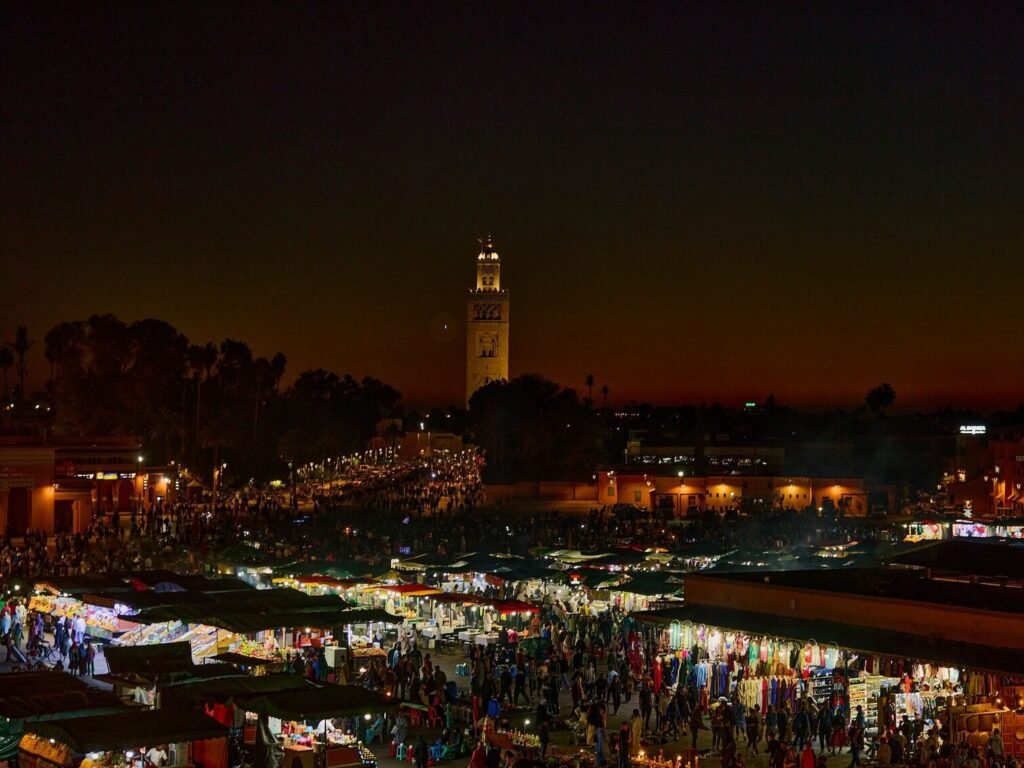
Arriving in Marrakesh Your Moroccan honeymoon begins as you land at Marrakesh Menara Airport. Marrakesh, known for its vibrant souks, historic palaces, and lush gardens, is the perfect place to start your journey.
Most Important Things to See and Do in Marrakesh
Jemaa el-Fnaa is the heart of Marrakesh, known for its lively atmosphere and cultural vibrancy. By day, it’s a bustling market filled with stalls selling fresh juices, spices, and local crafts. As night falls, the square transforms into a lively entertainment hub with street performers, musicians, and food vendors offering traditional Moroccan delicacies. This UNESCO World Heritage site is a must-visit to experience the essence of Marrakesh.
Created by French painter Jacques Majorelle in the 1920s, Majorelle Garden is a lush botanical garden featuring exotic plants and vibrant blue buildings. Later restored by fashion designer Yves Saint Laurent, the garden also houses the Berber Museum, showcasing the rich culture and history of Morocco’s indigenous people.
Built in the late 19th century, Bahia Palace is an architectural marvel showcasing Moroccan and Islamic design. The palace features intricately decorated rooms, grand courtyards, and beautiful gardens. Originally intended to be the greatest palace of its time, it now stands as a testament to Moroccan artistry and craftsmanship. A visit here provides a glimpse into the opulent lifestyles of Moroccan nobility.
The Koutoubia Mosque is the largest mosque in Marrakesh and a key landmark of the city. Its 77-meter tall minaret is visible from miles away and serves as a prominent symbol of Marrakesh. Built in the 12th century, the mosque is an outstanding example of Almohad architecture. While non-Muslims cannot enter, the exterior and the surrounding gardens are worth exploring.
Discovered in 1917 and restored to their former glory, the Saadian Tombs date back to the late 16th century. The tombs are the final resting place of members of the Saadian dynasty and are renowned for their intricate tile work, ornate plaster, and marble carvings.
Once a grand palace built in the 16th century by Sultan Ahmed al-Mansour, El Badi Palace now stands in ruins. Despite its ruined state, the site offers impressive views of its former grandeur with remnants of grand pavilions, sunken gardens, and reflecting pools. Visitors can explore the vast grounds and enjoy panoramic views of the city from the palace walls.
The Menara Gardens, established in the 12th century, are a vast olive grove and pavilion complex surrounding a large reflective pool. The gardens were originally designed as an agricultural estate and a place for sultans to relax. Today, it offers a peaceful escape from the city’s hustle and bustle, with stunning views of the Atlas Mountains in the background.
A visit to a traditional Moroccan hammam (bathhouse) is a quintessential experience. These steam baths are a cultural staple, offering a unique way to relax and rejuvenate. Visitors can enjoy a full body scrub, a steam bath, and a relaxing massage, making it an ideal way to unwind after exploring the city.
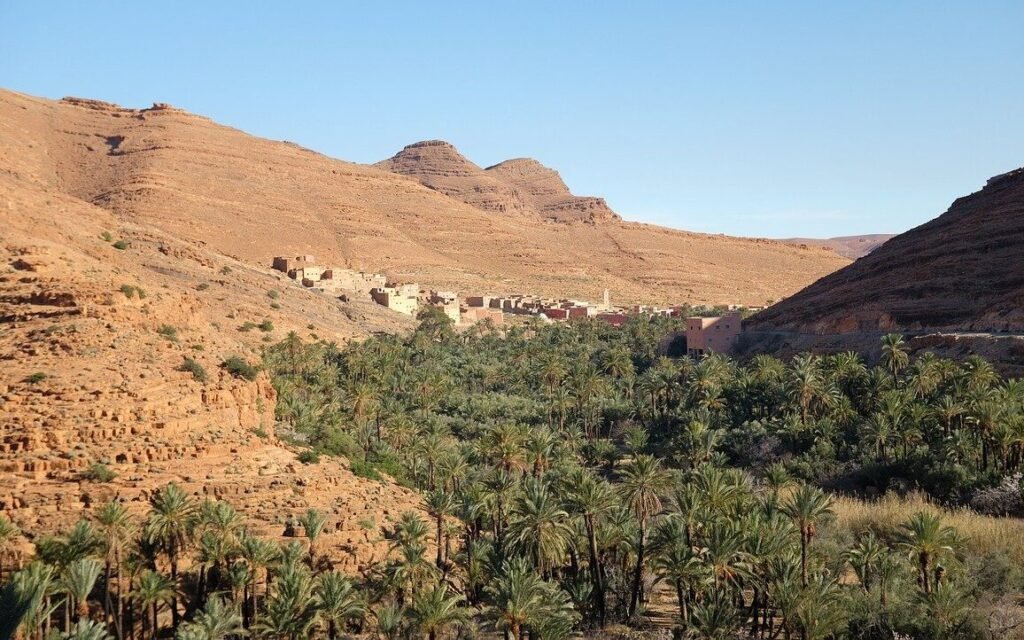
Morocco Honeymoon Itinerary – Marrakesh
Day 1: Check into La Mamounia, a luxurious hotel with beautiful gardens. Start your adventure with a relaxing stroll through the Majorelle Garden, followed by dinner at Al Fassia, known for its authentic Moroccan cuisine.
Day 2: Explore the historic Bahia Palace and Saadian Tombs. Spend your afternoon shopping at the bustling Jemaa el-Fnaa square. Enjoy dinner at Nomad, offering a modern twist on traditional Moroccan dishes.
Day 3: Visit the Koutoubia Mosque and the stunning Menara Gardens. For dinner, head to Le Jardin, a charming restaurant set in a lush garden.
Day 4: Take a day trip to the Atlas Mountains, visiting the Ourika Valley and the Setti Fatma waterfalls. Return to Marrakesh for a romantic dinner at Dar Yacout, known for its atmospheric setting and delicious food.
Day 5: Spend your day at leisure, perhaps indulging in a traditional hammam spa treatment. In the evening, enjoy a cooking class to learn how to make Moroccan delicacies, followed by dinner at your hotel.
Day 6: Visit the El Badi Palace and the Marrakech Museum. End your stay in Marrakesh with a sunset camel ride in the Palmeraie.
Recommended Resorts: La Mamounia, Royal Mansour
Recommended Restaurants: Al Fassia, Nomad, Le Jardin, Dar Yacout
DAY 7-10: EXPLORING ESSAOUIRA
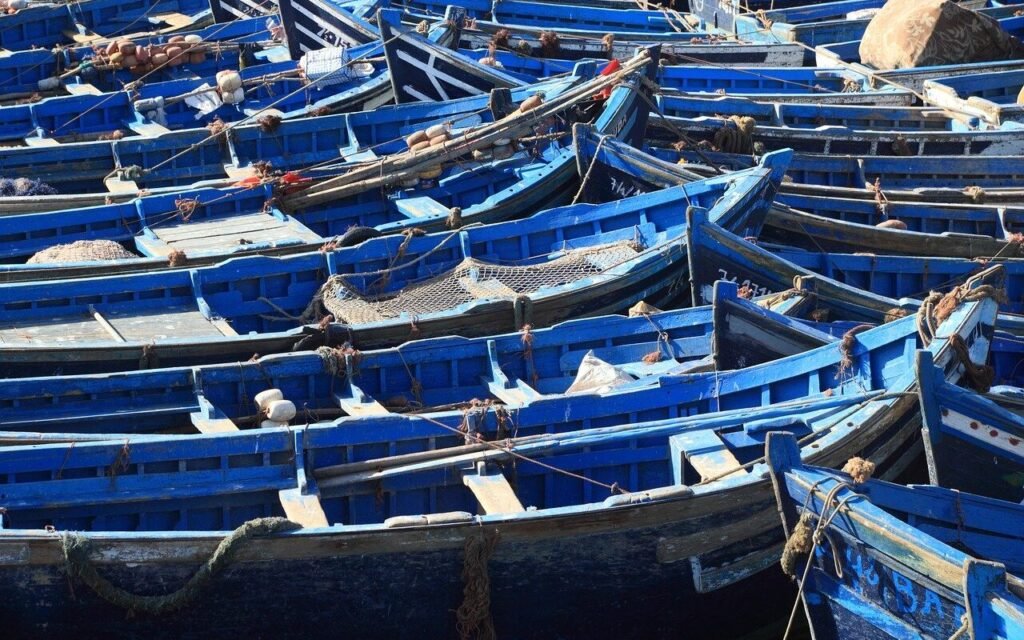
The coastal city of Essaouira is known for its charming medina, historic ramparts, and beautiful beaches. It’s the perfect place to relax and enjoy the sea breeze.
Most Important Things to See and Do in Essaouira
The Medina of Essaouira, a UNESCO World Heritage site, is a maze of narrow streets lined with whitewashed buildings, blue doors, and bustling souks. It’s known for its relaxed atmosphere and less chaotic vibe compared to other Moroccan cities. Visitors can explore artisan shops, galleries, and markets, offering a variety of local crafts and products, including spices, textiles, and jewelry.
Essaouira Beach is famous for its wide, sandy shorelines and strong Atlantic winds, making it a premier destination for windsurfing and kitesurfing. The beach is ideal for leisurely strolls, sunbathing, and enjoying fresh seafood at the nearby cafes and restaurants.
The Skala de la Ville is a historic fortification that offers stunning panoramic views of the Atlantic Ocean and the city’s port. Built in the 18th century to protect Essaouira from naval attacks, it features cannons, ramparts, and a walkway where visitors can enjoy the sea breeze and capture beautiful photos of the rugged coastline.
The bustling port of Essaouira is a lively spot where visitors can witness traditional fishing boats and bustling fish markets. Early in the morning, the port is particularly vibrant with fishermen unloading their catch and auctioning off fresh seafood.
Moulay Hassan Square is the main square in Essaouira, surrounded by cafes, restaurants, and shops. It’s a popular gathering place for both locals and tourists, offering a lively atmosphere and frequent cultural events.
The city’s ramparts offer a glimpse into its historical military architecture. Built in the 18th century, the ramparts provide a scenic walking path along the coast with views of the ocean and the old cannons that once defended the city.
The Souk Jdid market is a traditional Moroccan market where visitors can find a variety of goods, from fresh produce and spices to clothing and household items. The market is less touristy compared to those in larger cities, offering an authentic shopping experience and a chance to interact with locals and learn about their daily lives.
Essaouira is famous for its production of argan oil, and visiting an argan oil cooperative is a must. These cooperatives often offer tours where visitors can learn about the traditional methods of extracting argan oil and its various uses. Purchasing argan oil directly from these cooperatives supports local women and ensures the authenticity of the product. Do it!
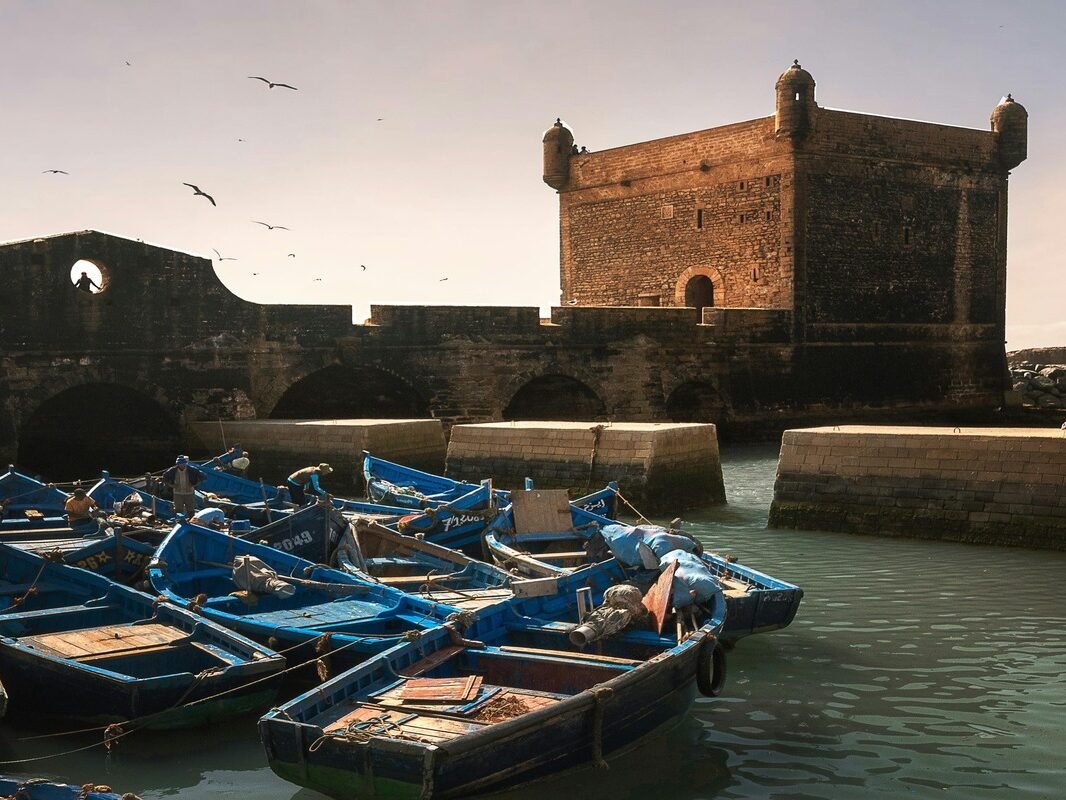
Morocco Honeymoon Itinerary – Essaouira
Day 7: Travel to Essaouira and check into Heure Bleue Palais, a luxury hotel with stunning views. Take a leisurely walk along the beach and enjoy dinner at Ocean Vagabond, offering fresh seafood and a relaxed atmosphere.
Day 8: Explore the medina, a UNESCO World Heritage site, and visit the Skala de la Ville, the city’s historic fortress. For dinner, try the local seafood at La Table by Madada.
Day 9: Spend your day at leisure, perhaps taking a windsurfing lesson or simply relaxing on the beach. In the evening, dine at Elizir, known for its eclectic decor and delicious cuisine.
Day 10: Visit the local artisan workshops and galleries, then enjoy a romantic sunset dinner at your hotel.
Recommended Luxury Resorts: Heure Bleue Palais, Le Medina Essaouira Hotel Thalassa Sea & Spa
Romantic Dining Experiences: Ocean Vagabond, La Table by Madada, Elizir
DAY 11-13: DESERT ADVENTURE IN MERZOUGA
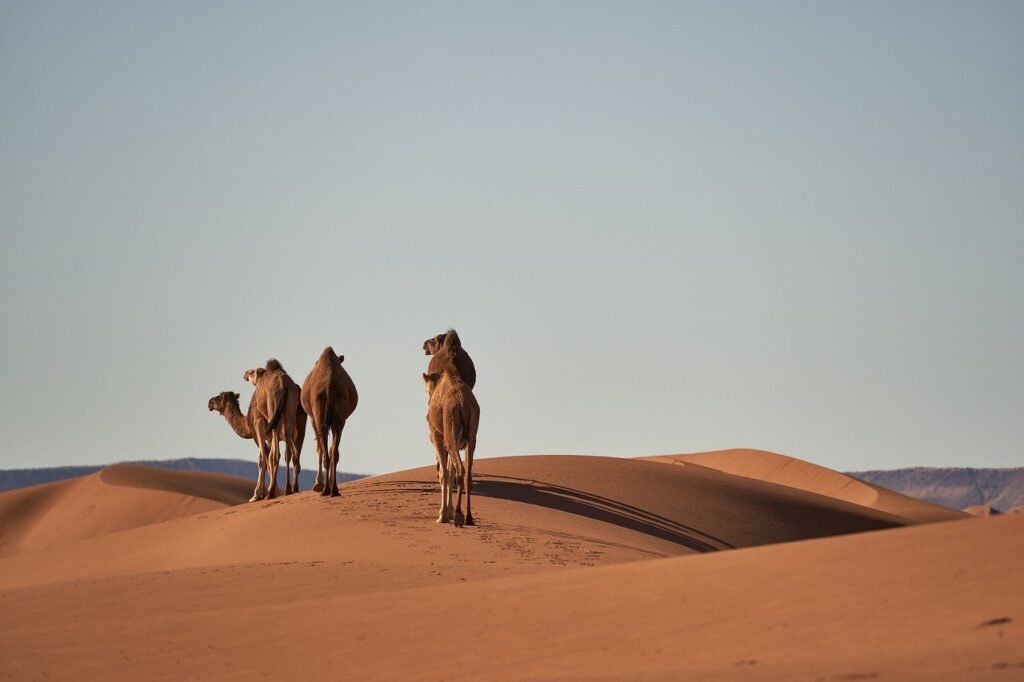
Merzouga is nown for its stunning sand dunes and unforgettable desert experiences. It is a must-visit for any trip to Morocco!
Most Important Things to See and Do in Merzouga
The Erg Chebbi dunes are the main attraction in Merzouga, known for their stunning, towering sand dunes that can reach up to 150 meters high. Visitors can experience the beauty of the Sahara Desert by taking a camel trek during sunrise or sunset, providing breathtaking views and photo opportunities.
Camel trekking is a popular activity in Merzouga, allowing visitors to explore the desert in a traditional way. These treks can last from a few hours to several days, often including overnight stays in Berber camps. This experience provides an immersive insight into the nomadic lifestyle and the unique culture of the Berber people.
Spending a night in a desert camp is a must-do activity in Merzouga. These camps range from basic to luxurious and typically include traditional Berber music, dance, and meals. Sleeping under the stars in the tranquility of the Sahara is an unforgettable experience that offers both adventure and relaxation.
For those seeking more adrenaline, 4×4 desert tours are available. These tours take visitors deep into the desert, navigating the vast dunes and remote areas that are inaccessible by foot or camel.
Merzouga is home to the Gnawa people, known for their unique musical traditions. Visitors can enjoy live Gnawa music performances, which feature hypnotic rhythms and dances. These performances are often held in the local villages or as part of desert camp experiences, providing a rich cultural insight into the region.
Lake Dayet Srij is a seasonal salt lake near Merzouga, attracting a variety of bird species, including flamingos, during the wet season. It’s a great spot for birdwatching and offers a contrasting landscape to the surrounding desert dunes. The lake is best visited in the spring when it’s most likely to be filled with water.
The nearby town of Rissani hosts a vibrant traditional market, which is a cultural highlight of the region. The market is held three times a week and offers a range of goods, from fresh produce to handmade crafts. It’s a great place to experience local commerce and purchase unique souvenirs.
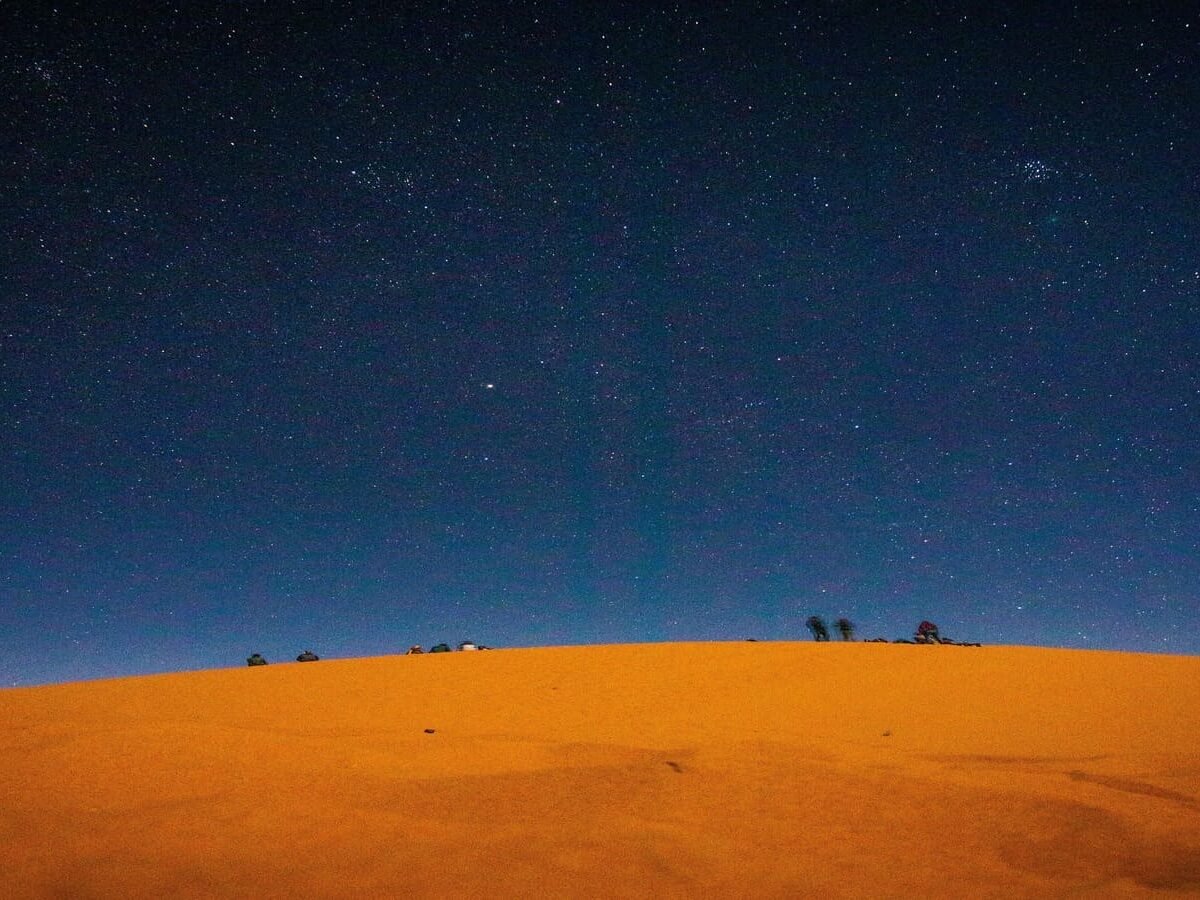
Morocco Honeymoon Itinerary – Merzouga
Day 11: Travel to Merzouga and check into a luxury desert camp like Desert Luxury Camp. Enjoy a camel trek at sunset, followed by a traditional Berber dinner under the stars.
Day 12: Spend your day exploring the dunes on a 4×4 adventure, visiting the Gnawa village of Khamlia, known for its unique music. Enjoy a picnic lunch in the dunes, then return to your camp for dinner and stargazing.
Day 13: Take an early morning camel ride to watch the sunrise over the dunes. Spend the rest of the day relaxing at your camp or visiting nearby desert oases.
Recommended Luxury Resorts: Desert Luxury Camp, Kam Kam Dunes
Romantic Dining Experiences: Private dining experiences at the desert camp
DAY 14-16: FEZ, THE SPIRITUAL HEART OF MOROCCO
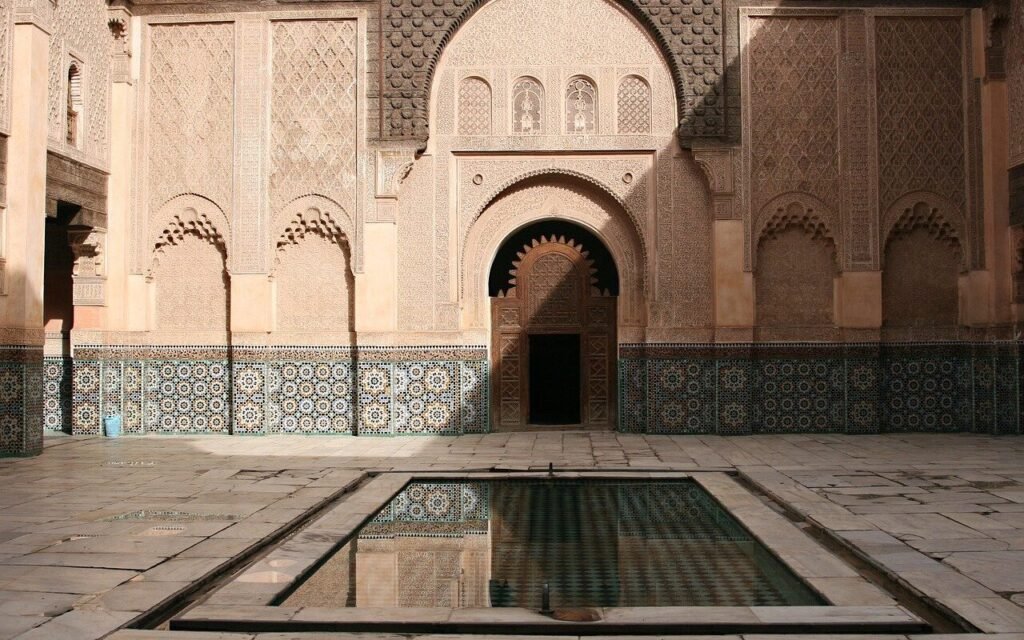
Fez is known for its ancient medina, historic universities, and vibrant souks. It’s a city rich in history and culture, perfect for exploring together.
Most Important Things to See and Do in Fez
The Medina of Fez is a UNESCO World Heritage site and one of the largest car-free urban areas in the world. It is renowned for its labyrinthine alleys, vibrant souks, historic madrasas, and the famous leather tanneries. The Medina offers an immersive experience into Moroccan culture and history.
Bou Inania Madrasa is a stunning example of Marinid architecture. Founded in the 14th century, this educational institution is renowned for its intricate tile work, wood carvings, and beautiful courtyard. It is one of the few religious sites in Morocco that is open to non-Muslims.
Al Quaraouiyine University is considered the oldest continuously operating university in the world. Founded in 859 AD, it has been a significant center of learning in the Islamic world. The university library, recently restored, is home to ancient manuscripts and historical texts.
Housed in a former palace, the Dar Batha Museum showcases traditional Moroccan arts and crafts. The museum’s collection includes ceramics, textiles, woodwork, and traditional instruments, providing a comprehensive overview of Moroccan cultural heritage.
The tanneries of Fez are one of the city’s most iconic sights. Visitors can observe the traditional process of leather making, which has remained largely unchanged for centuries. The sight and smell of the tanneries, along with the vibrant colors of the dye vats, make for a memorable experience.
Jnan Sbil Gardens offer a peaceful retreat from the bustling city. These public gardens feature lush greenery, fountains, and a variety of plant species. It’s a perfect spot for a leisurely stroll or a relaxing afternoon amidst nature.
The Mellah is the historic Jewish quarter of Fez. It features narrow streets, synagogues, and a Jewish cemetery. The district provides a glimpse into the rich Jewish heritage and history in Morocco.
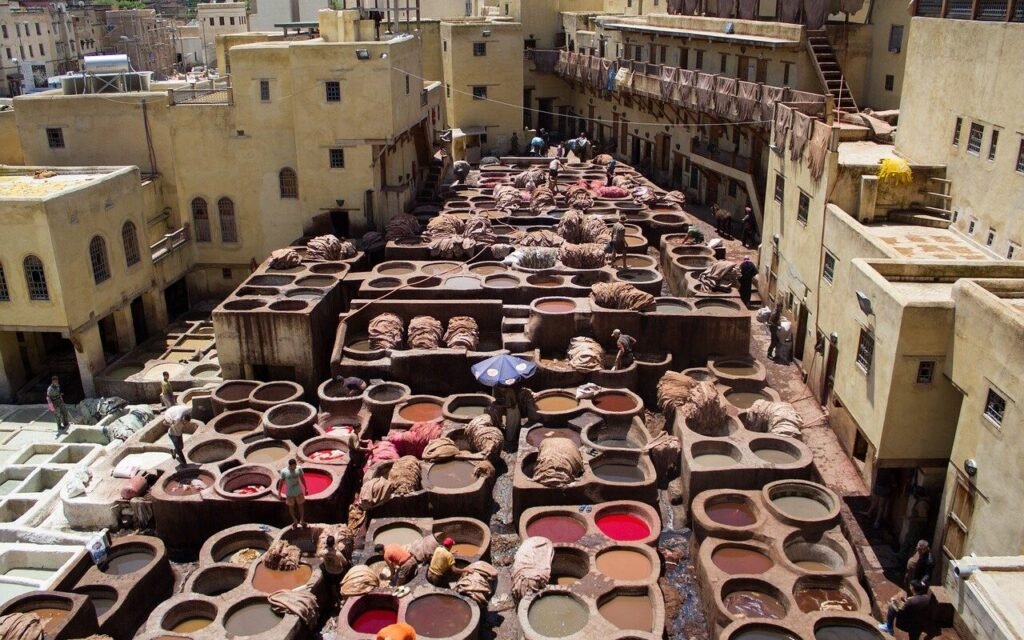
Morocco Honeymoon Itinerary – Fez
Day 14: Travel to Fez and check into Riad Fes, a luxurious riad in the heart of the medina. Explore the medina’s narrow streets and visit the Al Quaraouiyine University. Dine at The Ruined Garden, known for its lovely ambiance and delicious food.
Day 15: Visit the stunning Bou Inania Madrasa and the Chouara Tannery. Enjoy a romantic dinner at L’Amandier, offering rooftop views and Moroccan cuisine.
Day 16: Take a day trip to the Roman ruins of Volubilis and the holy city of Moulay Idriss. Return to Fez for dinner at your riad.
Recommended Luxury Resorts: Riad Fes, Palais Amani
Romantic Dining Experiences: The Ruined Garden, L’Amandier
DAY 17-20: CHEFCHAOUEN AND RABAT
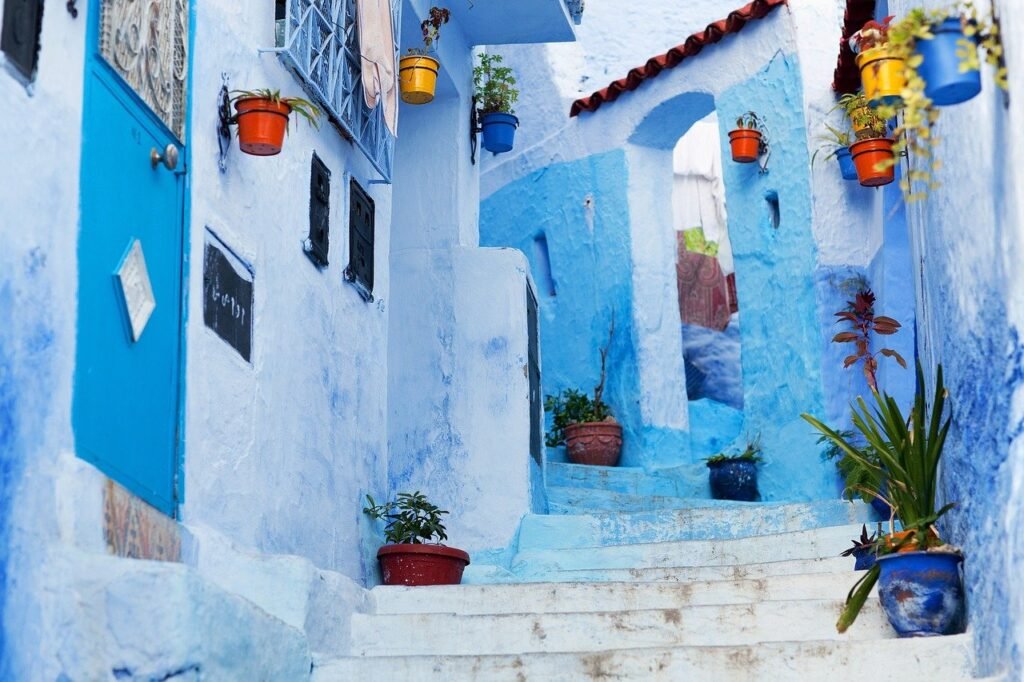
Chefchaouen, known as the Blue City, is famous for its blue-washed buildings and stunning mountain views. Wandering through its vibrant alleys is a must-do activity, offering numerous photo opportunities and a serene atmosphere. A true romantic experience.
Most Important Things to See and Do in Chefchaouen
Located in the heart of the medina, the Kasbah Museum is housed in a restored 15th-century fortress. It offers insights into the history and culture of the region, featuring traditional artifacts, gardens, and panoramic views from its tower.
Just a short walk from the medina, Ras El Maa is a refreshing waterfall where locals and visitors alike come to relax. It’s an ideal spot for a picnic or to cool off on a hot day.
This central square is the perfect place to experience the local vibe, with numerous cafes and restaurants offering traditional Moroccan cuisine. It’s a great spot to relax, people-watch, and enjoy the view of the surrounding mountains.
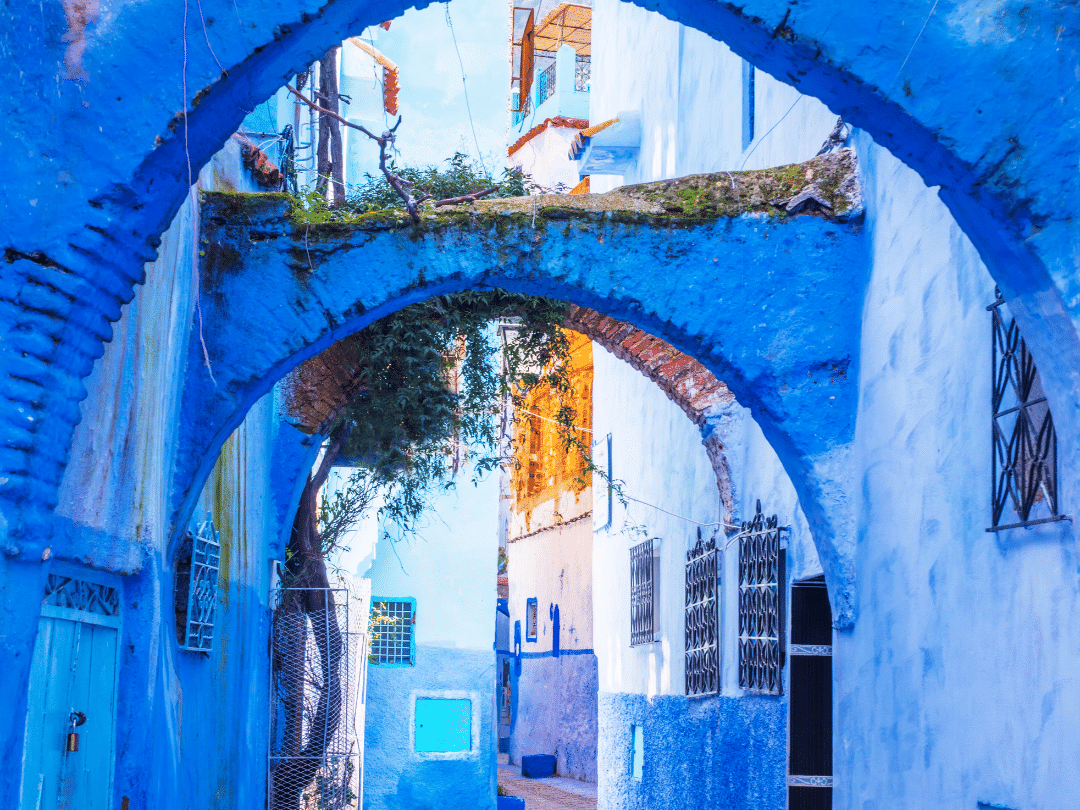
Most Important Things to See and Do in Rabat
The Kasbah of the Udayas is a historical fortress located at the mouth of the Bou Regreg river. Its narrow streets, Andalusian Gardens, and stunning views of the Atlantic Ocean make it a must-visit site in Rabat.
The Hassan Tower is an incomplete minaret of a grand mosque started in the 12th century. It stands as a symbol of Rabat and offers a glimpse into the city’s rich history. The site also includes the Mausoleum of Mohammed V, which houses the tombs of the Moroccan king and his two sons.
Chellah is a medieval fortified necropolis on the outskirts of Rabat. It features ancient Roman ruins, Islamic structures, and beautiful gardens. The site is a peaceful retreat with a rich historical backdrop.
Rabat’s medina is a UNESCO World Heritage site and offers a more relaxed atmosphere compared to other Moroccan medinas. It’s a great place to shop for handicrafts, enjoy traditional food, and explore narrow alleys filled with history.
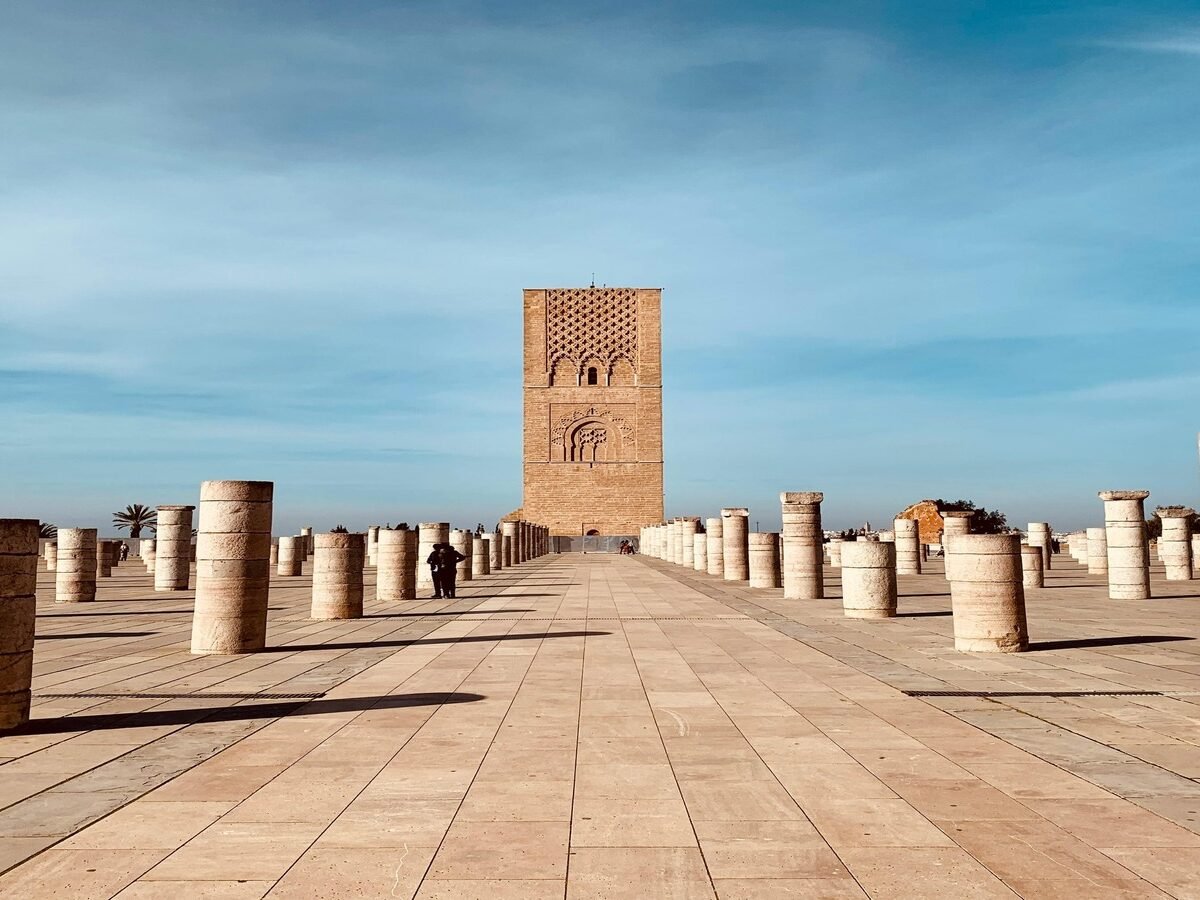
Morocco Honeymoon Itinerary – Chefchaouen and Rabat
Day 17: Travel to Chefchaouen and check into Riad Cherifa, a charming riad with traditional decor. Explore the medina and enjoy dinner at Bab Ssour, offering local cuisine in a cozy setting.
Day 18: Spend your day hiking in the Rif Mountains or exploring the city’s historic sites. Dine at Casa Hassan, known for its Moroccan dishes and warm atmosphere.
Day 19: Travel to Rabat and check into La Tour Hassan Palace. Visit the Kasbah of the Udayas and the Hassan Tower. Enjoy dinner at Le Dhow, a floating restaurant with beautiful views of the Bouregreg River.
Day 20: Spend your final day relaxing at the hotel or exploring more of Rabat’s attractions. End your honeymoon with a romantic dinner at your hotel.
Recommended Luxury Resorts: Riad Cherifa, La Tour Hassan Palace
Romantic Dining Experiences Bab Ssour, Casa Hassan, Le Dhow
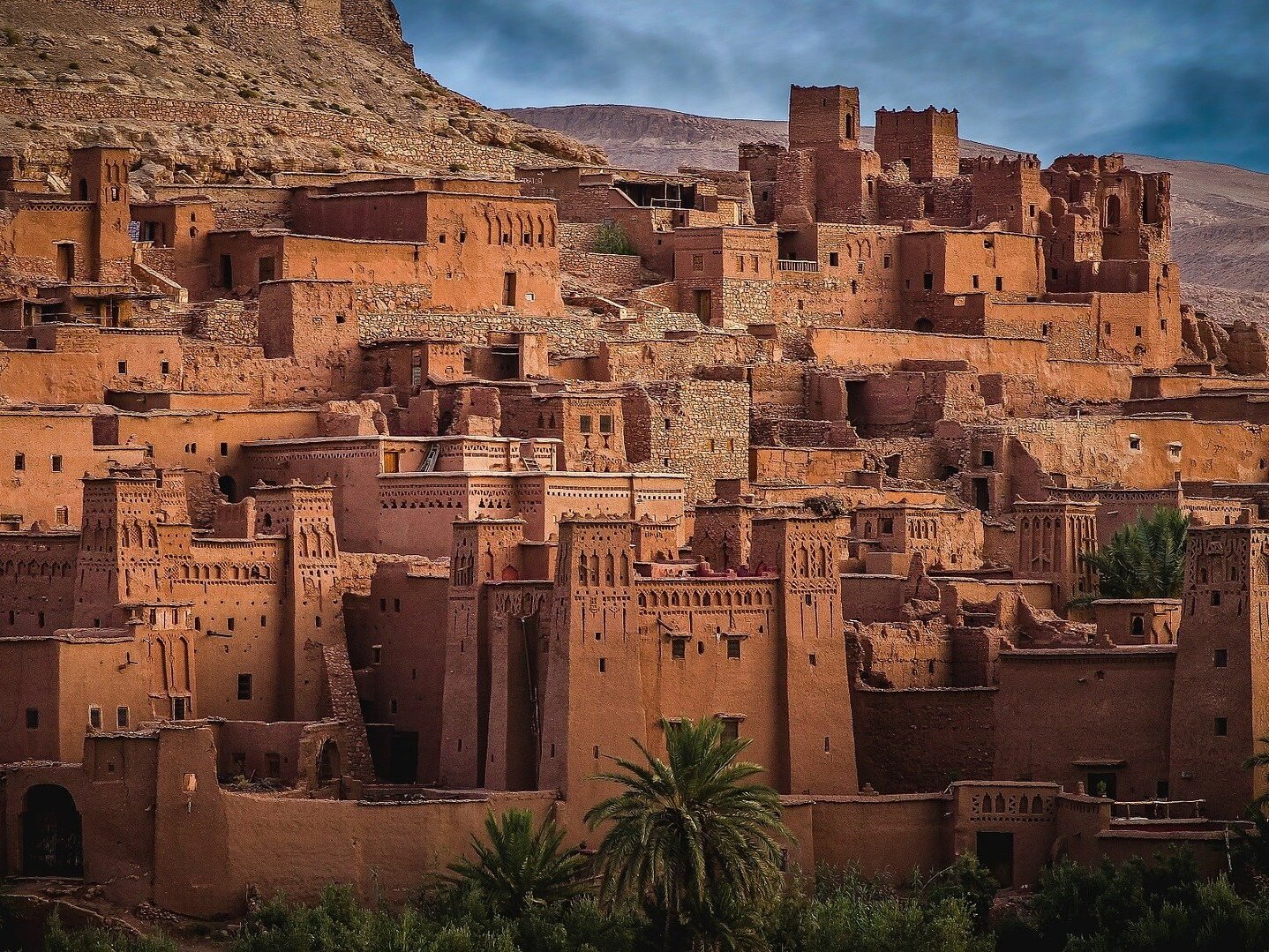
Your honeymoon in Morocco will be filled with magic and romance. With Travels Jinn, planning your perfect vacation is easy and stress-free. From personalized itineraries, expert guide, cost tracking to personal translator; Travels Jinn ensures your honeymoon is unforgettable. Our travel service platform offers also a one-stop platform for booking accommodations and flights, making your planning process effortless.
If you want to learn more about Morocco read our Ultimate Morocco Guide. If you need more inspiration go to our 2024 Honeymoon Heavens.
Do you want a deep dive into the world of Luxury Travel? Please read: TJ Luxury Travel Guide; The Most Exclusive Private Island Resorts; The Ultimate Guide to Wellness Experiences in Tropical Destinations… They will provide invaluable suggestions and info.
Tips for Planning a Morocco Honeymoon
Book Early: To snag the best places to stay and the coolest experiences, make sure to book your trip well ahead of time.
Travel Insurance: Don’t forget to get travel insurance. It’s a great way to protect your plans and have some peace of mind.
Local Customs: Morocco has a rich cultural heritage, so it’s important to respect local customs and dress modestly, especially when you’re at religious sites.
Health Precautions: Stay healthy by drinking plenty of water, using sunscreen, and being careful with what you eat.
Morocco and its magic will create everlasting memories!

